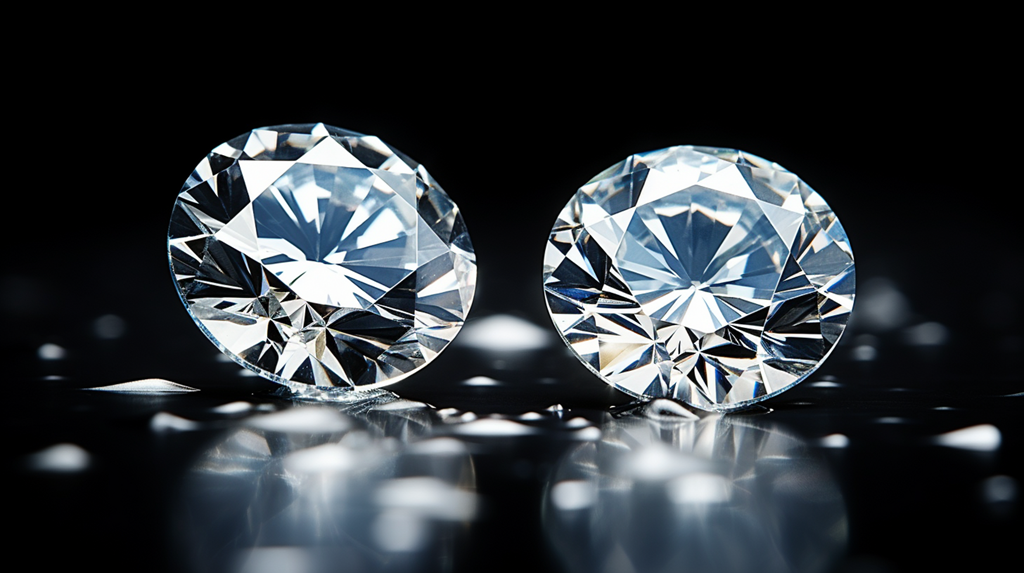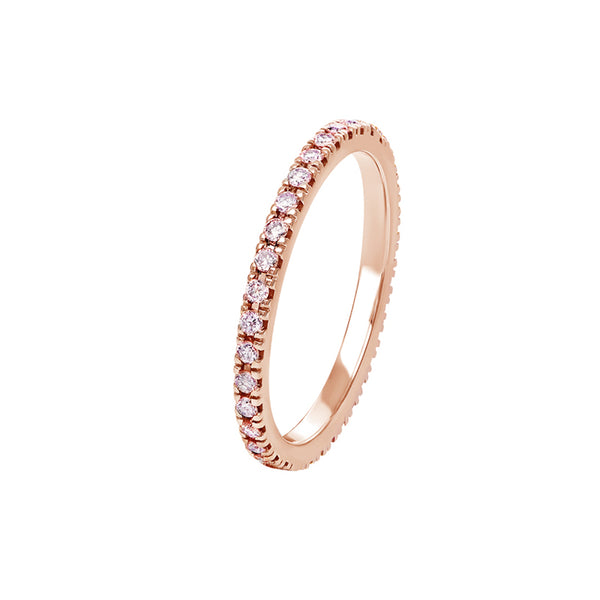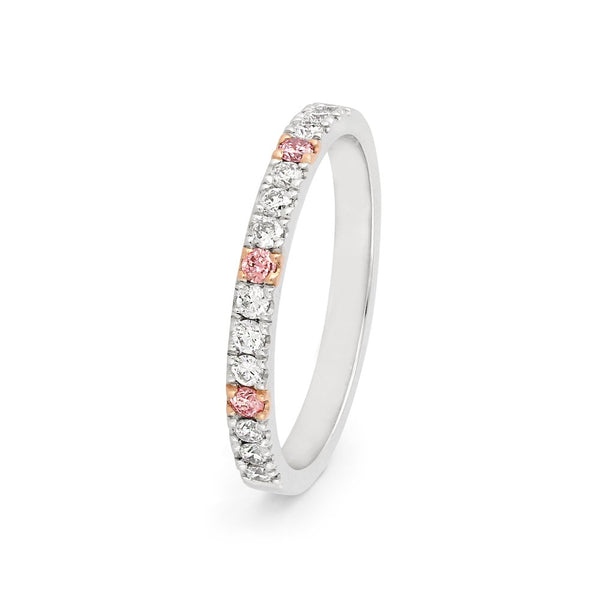Which Is Better Lab Created Diamond or Natural?

You've always dreamed of that perfect diamond sparkle, haven't you? But here's the twist, not all that glitters needs to be mined. Welcome to the clash of the carats, where we'll compare natural diamonds and their lab-created counterparts. You'll delve into the world of diamond quality, pricing, ethical sourcing, and future trends. It's time to challenge assumptions and discover which diamond truly matches your sparkle.
Understanding Natural Diamonds
First, let's delve into the world of natural diamonds, which are formed over billions of years beneath the Earth's surface. This process, known as diamond formation, begins when carbon deposits are subjected to intense heat and pressure, typically at depths of 140 to 190 kilometers. Over time, these deposits gradually crystallize into rough diamonds that are often carried to the surface by volcanic eruptions.
Geographical distribution of these precious stones is a fascinating aspect to consider. While diamonds can be found worldwide, specific locations are renowned for their abundance. You're likely aware of Africa's prominence in the diamond industry. Countries such as Botswana, South Africa, and the Democratic Republic of Congo are rich in these gems. However, Russia and Canada also have substantial diamond reserves, demonstrating that diamond formation isn't restricted to any particular climate or terrain.
Understanding the historical significance of diamonds can deepen your appreciation of these stones. Diamonds weren't just sought after for their beauty; they've played crucial roles in economic, political, and social contexts. For centuries, diamonds served as a status symbol, a means of wealth preservation, and even a source of conflict. The allure and power of diamonds have shaped histories and societies, underscoring their significance beyond mere adornment.
The Process of Lab-Created Diamonds
Now, let's shift your focus to lab-created diamonds also know as lab grown diamonds, which are scientifically grown in a matter of weeks using high-tech processes. The creation of these diamonds involves two key methods: High Pressure High Temperature (HPHT) and Chemical Vapor Deposition (CVD). Both methods mimic the natural conditions under which diamonds form, but do so in a controlled laboratory setting.
Synthetic diamond advancements have made it possible to produce gem-quality diamonds in a relatively short time span. HPHT, the older of the two methods, involves subjecting a diamond 'seed' to extreme pressures and temperatures akin to those deep within the Earth's mantle. The carbon atoms in the seed align themselves in a crystal structure, slowly growing into a diamond.
CVD, on the other hand, starts with a thin slice of diamond seed in a sealed chamber, which is filled with a carbon-rich gas and heated to extremely high temperatures. This process causes the carbon atoms in the gas to stick to the diamond seed, layer by layer, eventually forming a diamond.
These Diamond Cloning Techniques have given rise to a booming Lab Grown Diamond Market that offers a more ethical and sustainable alternative to natural diamonds. Despite the speed and efficiency of their creation, lab-created diamonds are virtually indistinguishable from their natural counterparts, possessing the same physical, chemical, and optical properties. So, when you're weighing the pros and cons of lab-grown versus natural diamonds, remember that the choice isn't just between 'real' and 'synthetic' - it's between tradition and innovation.

Comparing Diamond Quality
When it comes to comparing the quality of lab-created and natural diamonds, you'll find they're remarkably similar. Both types of diamonds are scrutinized using the same diamond grading standards. This means they're both evaluated based on the four Cs: carat weight, color, clarity, and cut.
Look into the color variance of both types of diamonds, and you'll notice that they can both range from colorless to light yellow or light brown. However, it's worth noting that lab-created diamonds often have fewer color variances because they're produced under controlled conditions. This could be a significant factor if you're particular about the color of your diamond.
Examine the clarity, and you'll find that both lab-created and natural diamonds can possess inclusions or blemishes. However, lab-created diamonds typically have fewer inclusions due to the controlled conditions in which they're created. This can result in a clearer and more flawless appearance.
The cut precision of both lab-created and natural diamonds is also comparable. Both types can be accurately cut to reflect light and showcase brilliance. However, the precision of the cut largely depends on the skill of the cutter, not the origin of the diamond.
Price Difference: Natural Vs Lab-Created
Continuing from the quality comparison, let's dive into another crucial factor you should consider: the price difference between lab-created and natural diamonds. This price difference can be substantial, playing a significant role in the affordability factor for many consumers.
- Affordability Factor: Lab-created diamonds are generally more affordable than their natural counterparts. This is because the cost of producing a lab-created diamond is less than the cost of mining a natural one. You can expect to save up to 60-90% when purchasing a lab-created diamond.
- Pricing Transparency: When it comes to lab-created diamonds, there's a higher level of pricing transparency. The cost of creating these gems is more predictable and stable, resulting in less pricing fluctuations and giving you a clearer understanding of what you're paying for.
- Consumer Preferences: Your preferences play a big part in this decision. If you value rarity and tradition, you might lean towards natural diamonds despite the higher cost. However, if you value ethical sourcing and affordability, a lab-created diamond might be your best bet.
- Quality vs. Price: Despite the price difference, the quality of lab-created and natural diamonds is virtually indistinguishable. Both types offer brilliant sparkle and durability; the difference lies in the origin and the price tag.
Ethics and Diamond Sourcing
While you're considering the price and quality of lab-created and natural diamonds, it's also crucial to think about the ethical implications of your choice. Your decision can contribute to sustainable mining practices, foster ethical consumerism, and support conflict-free certifications.
Natural diamonds, sourced directly from the earth, are often linked with numerous ethical issues. From unsafe working conditions for miners to environmental degradation and conflict financing, the diamond mining industry has had its share of controversies. However, it's worth noting that efforts have been made to improve these conditions. For instance, many mining companies now strive for sustainable mining practices and conflict-free certifications.
In contrast, lab-created diamonds present a more ethical alternative. They don't involve potentially harmful mining, and their production doesn't finance conflicts. But they too have their own ethical considerations, such as energy consumption and working conditions in labs.
To illustrate, consider the following table:
| Natural Diamonds | Lab-Created Diamonds | |
|---|---|---|
| Sustainable Mining | May vary | Not applicable |
| Conflict Free Certifications | Available | Always |
| Ethical Consumerism | Dependent on sourcing | More likely |
Future Trends in Diamond Industry
Looking ahead, you'll see that the diamond industry is poised for significant changes in the future. The industry evolution is influenced by factors such as technological advancements, consumer preferences, and global economic trends. As with any industry, those who can accurately predict and adapt to these changes will be the ones to thrive.
Four key trends shaping the future of the diamond industry are:
- Technological Advancements: Technology is revolutionizing every aspect of the diamond industry, from mining and cutting to grading and retailing. For instance, lab-created diamonds are becoming increasingly popular due to their lower cost and ethical sourcing.
- Consumer Preferences: As consumers become more conscious about ethical sourcing and environmental impact, there's a shift towards lab-grown diamonds. This trend is particularly evident among millennials and Gen Z consumers.
- E-commerce: The rise of e-commerce platforms has simplified the process of buying diamonds. Consumers can now browse, compare, and purchase diamonds from the comfort of their own homes.
- Global Economic Trends: The diamond industry is highly sensitive to economic fluctuations. For instance, strong growth in Asian economies has led to increased demand for diamonds in these regions.
These trends highlight the dynamic nature of the diamond industry. It's an industry that's continuously evolving, shaped by technological advancements and shifts in consumer preferences. However, one thing is certain: diamonds, whether natural or lab-created, will continue to captivate consumers. Understanding these trends is crucial for anyone involved in the diamond industry, from miners and manufacturers to retailers and consumers.

Frequently Asked Questions
How Long Does It Take to Create a Lab-Grown Diamond Versus the Time Taken to Mine a Natural Diamond?"
Creating a lab-grown diamond can take a few weeks, thanks to technological advancements. In contrast, nature can take between one to three billion years to form a natural diamond. Despite the time difference, diamond quality comparison often shows similar results. Cost differences also exist, with lab-created often being more affordable. So, it's not just about time, but also about quality, cost, and your personal preferences.
Are There Any Specific Care Instructions for Lab-Created Diamonds Compared to Natural Ones?"
There's no universe of difference in caring for lab-created and natural diamonds. Diamond durability is a common trait, regardless of origin. You'll use the same cleaning techniques - gentle brushing with warm water and mild soap. As for diamond storage, keep them separately to avoid scratches. Don't be tricked into thinking lab-created diamonds need extra care. They're as tough as nails, just like their natural counterparts. Always remember, diamonds are forever, whether lab-grown or mined.
What Is the Environmental Impact of Creating Lab Diamonds Compared to Mining Natural Diamonds?"
When considering the environmental impact of lab diamonds versus natural ones, you'll find lab diamonds have less of a footprint. There's no mining involved in their creation, which reduces soil erosion and other ecological disruptions. While it's important to consider diamond purity comparison, lab diamond affordability and synthetic diamond acceptance, remember the environmental aspect. Lab diamonds offer beauty and affordability without significant harm to the earth.
Can Lab-Created Diamonds Be Insured Just Like Natural Diamonds?"
Sure, you can insure a lab-created diamond just like a natural one. When it comes to insurance cost comparison, it's the same. The insurance claim process doesn't discriminate between lab-grown and natural diamonds. It's all about the appraised value! Just remember, lab-created diamond authenticity is as real as natural ones, they're not fakes. You're protecting your investment, regardless of its origin. So, go ahead, insure your lab-created diamond with confidence.
Do Lab-Created Diamonds Have the Same Emotional or Sentimental Value as Natural Diamonds?"
Ultimately, the emotional or sentimental value you assign to lab-created diamonds is entirely subjective. It's your value perception that counts. If you see equal symbolic meaning and relationship significance in a lab-created diamond as you would a natural one, then yes, they can hold the same emotional value. Remember, it's the sentiment behind the diamond that truly matters, not its origin. It's about what the diamond represents to you and your relationship.
Conclusion
Ultimately, whether a lab-created or natural diamond is better for you depends on your priorities. If you're all about size and sparkle for your dollar, lab-grown diamonds are a smart choice, costing up to 30% less than their natural counterparts. But if rarity and tradition are important, natural diamonds hold the edge. Remember, each diamond, like your love story, is unique. Your choice should reflect what matters most to you.


